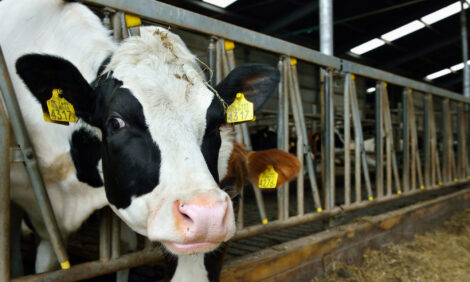



Diagnosing bovine mastitis: Real-Time PCR offers fast results
When mastitis is circulating in your herd, time can make a big difference.Real-time PCR tests provide fast mastitis results in 2.5–3 hours and can be relayed to the farmer the same day, while bacterial culture results can take up to 10 days in the case of infections by mycoplasmas.
When considering the spread of disease to other cows during the 10 or more days it takes for the culture results, time to test can have a severe impact on the health of the herd and a significant economic impact on the producer since diseased cows may need to be culled.
Even though real-time PCR generally costs more initially, the benefits can easily outweigh the price tag. Veterinarians say farmers often don’t mind paying a little more up front because they’re getting more information about their herd’s health and a confirmed result with a real-time PCR test1.
Related: Protect herd health and productivity with PCR
Waiting for Culture Testing?
Even after the up to 10 days a farmer may have to wait with culture testing, about 40–50% of clinically abnormal milk samples tested with traditional culture come back with a “no-growth” result1. This means the culture grown didn’t identify the pathogen or pathogens causing mastitis in the herd. Ultimately, additional testing is needed, which requires even more time to get a conclusive result. During that extended time, you could have mastitis disease spreading to other cows in the herd causing negative economic consequences.
To reduce the number of no-growth results, farmers should review their sampling techniques. But for high-value cows, it’s time to consider switching to real-time PCR testing. With PCR, it’s not necessary to rely on viable organisms because PCR is detecting the pathogen’s DNA. PCR minimizes the issues you may have with culture testing.
Advantages of Faster Results
Faster Mastitis Diagnosis Means Informed Action Sooner
Like any disease, the faster a mastitis diagnosis is determined, the faster a veterinarian and farmer can develop an action plan.
Once the mastitis-causative pathogens are identified, farmers can work with their veterinarians to determine next steps, which might be treatment protocol, no treatment, or culling depending on the pathogen or pathogens that are found. With the global focus on antimicrobial reduction, this is a critical step in the diagnostic process. It’s no longer good enough to guess at which mastitis pathogen(s) you are treating.
PCR diagnostics can provide this information in just a few hours. For example, Escherichia coli infections may have treatment protocols reduced or stopped upon confirmation of a diagnosis. On the other hand, a chronic Staphylococcus aureus infection might have the treatment protocol extended or the infected cow may be culled depending on her history of treatment success.
Related: The Importance of Sensitivity and Specificity in Diagnosing Bovine Mastitis
Treatment Protocols Determined by Diagnostic Test Results
Globally, treatment protocols vary by country. Generally, there are first-line (broad-spectrum) and second- and third-line (more tailored) antibiotic protocols, which are determined by diagnostic test results. The goals of this approach are to increase the effectiveness of antimicrobial therapy, reduce the occurrence of resistant strains, and reduce antibiotic residues in milk.
In the Nordic countries, like Finland, Norway, Sweden, and Denmark, there are clearly defined protocols outlining which antibiotics can be used. Antibiotics can only be used once there is confirmation of a diagnosis, so speed is of the essence. While bacteriological culturing is the most common method of testing in most of these countries, there’s been a shift in Finland away from culture. Now, most milk samples in Finland are analyzed using PCR2.
Better Mastitis Protocol Decisions with PCR Diagnostics
PCR diagnostics can help provide more information faster to producers and veterinarians so they can make better decisions to stop the spread of disease on their farm. Real-time PCR delivers highly accurate results with low levels of false-positive or false-negative results. The quick turnaround time of real-time PCR helps mitigate the spread of disease and potential economic loss, especially when testing for highly contagious mastitis pathogens that may require culling cows from the herd.
Find out more at thermofisher.com/mastitis.
For Veterinary Use Only. For In Vitro Use Only. Regulatory requirements vary by country; products may not be available in your geographic area.
References: “Determining Cause And Incidence Rate Of Clinical Mastitis In Dairy Cattle | Animal & Food Sciences”. Afs.Ca.Uky.Edu, 2021, https://afs.ca.uky.edu/content/determining-cause-and-incidence-rate-clinical-mastitis-dairy-cattle. Accessed 29 July 2021. Rajala-Schultz, Päivi et al. “Prudent Use Of Antibiotics In Dairy Cows: The Nordic Approach To Udder Health”. Frontiers In Veterinary Science, volume 8, 2021. Frontiers Media SA, doi:10.3389/fvets.2021.623998. Accessed 18 July 2021.
TheCattleSite News Desk




